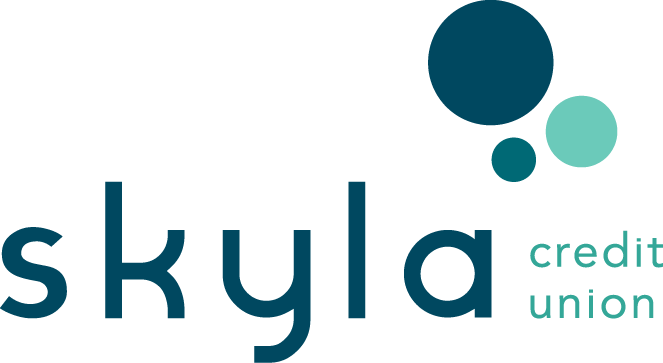How to Properly Use Revolving Credit

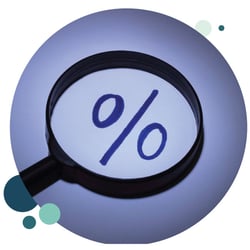 If you have a credit card or a line of credit (like a Home Equity Loan), chances are you’ve heard the term “Revolving Credit.” But, what the heck is it?!
If you have a credit card or a line of credit (like a Home Equity Loan), chances are you’ve heard the term “Revolving Credit.” But, what the heck is it?!
Revolving credit is a type of loan borrowers can repeatedly use to finance purchases and emergencies if needed. Borrowers must repay the amount they used to finance that purchase but they get to reuse that amount again. Hence the term revolving!
But just because you get to spend it, again and again, doesn't mean you get to be careless with your loan and spend it all willy-nilly.
There are fees and interest charges you may have to pay if you misuse your revolving credit account. And that is a recipe for hurting your credit score. |
The goal many borrowers try to achieve with a revolving line of credit is to increase their credit limit so it’s available whenever they need it, especially if an emergency occurs. Questions we often get asked include:
- How much revolving credit should be used?
- When should I use revolving credit?
- If I kept a high balance, how would that affect my credit score?
- Can revolving credit significantly increase my reputation as a borrower?
When it comes to being a responsible borrower, the answer to your questions boils down to knowing how and when to use revolving credit properly. All of which you'll be learning about in this article!
here's a quick look at what we'll cover
|
|
 what is revolving credit?
what is revolving credit?
Revolving credit is a type of credit account that’s open-ended, like a credit card that allows you to borrow up to a certain amount and make payments towards whatever amount you owe. Once you’ve repaid what you owe, you can borrow against that loan as often as needed (as long as your account is open)
Think of revolving credit as a spending cycle: You’re allowed to spend the money that you’ve borrowed, repay it and then spend it again. Just don’t go beyond your credit limit because that can put your account at risk of closing.
 what are the types of revolving credit?
what are the types of revolving credit?
Credit cards are just one type of revolving credit account. There are a few more including home equity loans (HELOC), and personal lines of credit. Each type of revolving credit has different terms. Make sure you read your loan agreement and have a repayment plan ready so you’re not accruing interest on your account.
- Credit Card: When you receive a loan or credit that’s accessible on a card. Depending on how you plan to use the card, you can make everyday purchases like groceries or larger purchases depending on the loan amount or credit limit that’s on the card. Your card may also give you perks like cash back or rewards.
- Home Equity Loans (HELOCs): According to mycreditunion.gov, a home equity loan is an open-end line of credit that generally is secured by a consumer’s primary residence. This means you can use the line of credit specifically for your home. Unlike credit cards, you can access your HELOC through a check, or by transferring funds to your checking or savings account.
- Personal Lines of Credit: Similar to a credit card but instead of using a card, the lender can deposit the line of credit directly into your checking or savings account or with a check.
 what's the difference between revolving and non-revolving credit?
what's the difference between revolving and non-revolving credit?
Unlike revolving credit, non-revolving doesn't allow you to replenish and reuse the funds again. Once the loan is used, that's it, and the account is closed. Revolving allows you to replenish the account and spend when you've borrowed again.
Some examples of non-revolving credit accounts include:
- Student loans
- Auto loans
- Home Mortgages
- Business loans
The cool thing about non-revolving credit accounts is that lenders offer higher loan amounts on those types of loans, and the debt is easier to manage. This means you won't have the urge to spend more on top of what you've already borrowed. Once you used the loan once, that's it. You're just repaying it back.
The kicker with non-revolving credit accounts is once the account is closed and you need another loan, you're applying for another loan and that can impact your credit score.
 why is it bad to keep a balance on revolving credit?
why is it bad to keep a balance on revolving credit?
Having a revolving balance means you’re accruing interest. Yep, just like other loans, you have to pay the price for borrowing from a lender, and that price of revolving credit can vary widely. That's why it's important to pay your balance in full every month to avoid paying interest.
for example…
Let’s say Tiffany opened a credit card account with a $3,000 credit limit. Her interest rate on the credit card is 11.99% APR*. She then goes to the furniture store to buy a $1,800 bedroom set using her new credit card.
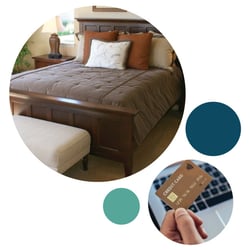 If she makes the minimum payment of $36 each month, the rest of the balance ($1,764) will carry over into the next month and will accrue interest, making next month’s balance higher – even if she doesn’t make any new purchases.
If she makes the minimum payment of $36 each month, the rest of the balance ($1,764) will carry over into the next month and will accrue interest, making next month’s balance higher – even if she doesn’t make any new purchases.
If she only makes the minimum payment, it can take her about 60 months to fully repay the $1,800 on top of the interest accrued. Not to mention, that total interest amount could be about $706.85!
In this example Tiffany decided not to repay the entire $1,800 in full, her remaining balance will carry over into the next month and the month after that until it’s paid in full. This is a revolving balance.
Since Tiffany doesn't have to repay the entire loan amount in full, that time gives her some wiggle room to cover other expenses. Yes, she could pay hundreds in interest, but she doesn’t have to cough up that entire loan amount right away which is a benefit. In the meantime, she can enjoy her new bedroom set.
If more money comes her way in the coming days, weeks, or months, Tiffany can pay more money towards her monthly payments, which will reduce the amount of interest that’s accrued.
QUICK TIP: If you have a 0% APR credit card, you can avoid paying interest when you have a balance that's carried into the next month. But 0% APR credit cards are promotional cards, so that 0% APR doesn't last forever. Here's what happens if you have a 0% APR credit card. |
 how does revolving credit affect my credit score?
how does revolving credit affect my credit score?
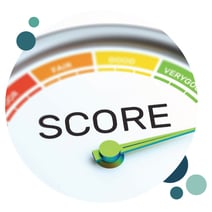
Like with any loan, when you apply the lender reviews your credit history and conducts a hard inquiry which could lower your credit score by a few points. Simply opening a new revolving credit account can increase your score because it adds to your mix of credit - which is what you want. But the key to revolving credit affecting your credit score is mostly about how you use the account.
Your credit score can be positively impacted if you do these two things.
- Keep your credit utilization low: Your credit utilization is the amount you currently owe divided by your credit limit, which is expressed as a percentage. This tells lenders your creditworthiness. If you have more than one credit card, personal line of credit, and other types of debt, lenders will calculate all your debt to determine whether you're creditworthy.
Psst… To be safe and keep your credit score in good standing, stay way below your credit limit. According to the Consumer Financial Protection Bureau, they recommend you stay below 30% of your credit limit. Other experts suggest having a 10% threshold. The lower the amount of debt you have the better.
- Pay your entire balance off each month: Yes, lenders allow you to just make a minimum payment, but that will only add more interest to your balance. If possible, pay your balance off in full each month. If you have a debt pay-down plan in place before you make a big purchase, you can prepare to have a certain amount set aside so you're able to repay the entire balance.
QUICK TIP: Avoid closing revolving credit accounts. If your revolving credit account is still open and in good standing, the length of credit history and available credit play a factor in your score. For example, if you find an old credit card you haven’t used in a while, dust it off and use it for a week to keep it active. |
If you need help understanding your credit score and want to learn more about boosting it, I have some tips for you. Check it out.
 how can i properly use revolving credit?
how can i properly use revolving credit?
If you do the following with your revolving credit account, you'll avoid or minimize the chances of paying fees and interest and boost your credit score.
- Only borrow what you need: Like any other line of credit, you should spend that amount responsibly. If you rack up more debt than you can handle, it will take time to repay, and that can increase the interest on the loan. The more debt you rack up can also affect your credit score.
- Keep Balances Low: On revolving credit, such as a credit card, make sure to keep your balance low. You should also try to keep your utilization under 10% or 30%. The lower your debt amount, the better.
- Pay the balance in full or pay more than the minimum amount: When you pay the entire balance in full, you're eliminating any chances of interest to accrue on the loan. Credit cards, for example, can accrue interest based on the average daily balance. You wouldn't pay interest or pay less interest if you paid the entire balance off or paid more than the minimum amount.
- Pay On-Time: Missed or late payments can have a major negative impact on your credit score. A 30-day late payment could decrease your score by 60 points. On top of that, paying a loan late comes with penalty fees, and You'll be required to pay more in interest.
- Have a debt paydown plan in place: To help you avoid borrowing more than you can afford, list out your monthly expenses and make a plan and make it visible. For more tips on how to create a debt paydown plan, check this article on the 7 Steps to Paying Down Debt.
- Be Responsible: Credit cards and installment loans help build credit, but lenders need to see a score that reflects responsibility. Don’t open a line of credit unless you’re confident you can manage it.
Here's a complete look at ways you can best use and misuse a credit card.
here's what's next:
The best way to stay in control is to continue using your loan responsibly. This means borrowing what you need, paying off your loan balance or paying more than the minimum balance amount. Use the tips above to keep your revolving credit in great shape. The results can boost your credit report and your positive activity will catch your lender's attention where you'll get offers for increasing your line of credit.
THINK YOU'LL NEED HELP managing your revolving credit account?
Our Customer Service Representatives are here for you here and ready to assist! You can get in touch with us here, call us at 704.375.0183, or visit any of our branches.
As Content Strategist behind the Learning & Guidance Center, Yanna loves showing just how doable finance can be. Whether it’s simple tips, step-by-step guides, or comparison charts, she’s passionate about helping readers take charge and reach financial freedom with confidence
more resources for your credit card journey
How to Best Use a Credit Card
Credit cards can be great but can also be a massive headache if you don't know how to use them responsibly. Here are the best ways to use a credit card.
15 min. read
What Happens If You Have 0% APR Credit Cards?
Looking for a credit card that offers a zero percent interest rate. Here’s what happens and what to keep in mind when you sign up for this kind of credit card.
8 min. read
 Learn How to Use Revolving Credit
Learn How to Use Revolving Credit
Here’s how to properly use revolving credit and avoid hurting your credit score.
 Know Benefits and Risks of 0% APR Credit Cards
Know Benefits and Risks of 0% APR Credit Cards
Here’s what happens and what to keep in mind when you sign up for this kind of credit card.
 Avoid Common Credit Card Mistakes
Avoid Common Credit Card Mistakes
Check out the mistakes many make and how to avoid them at all costs.
